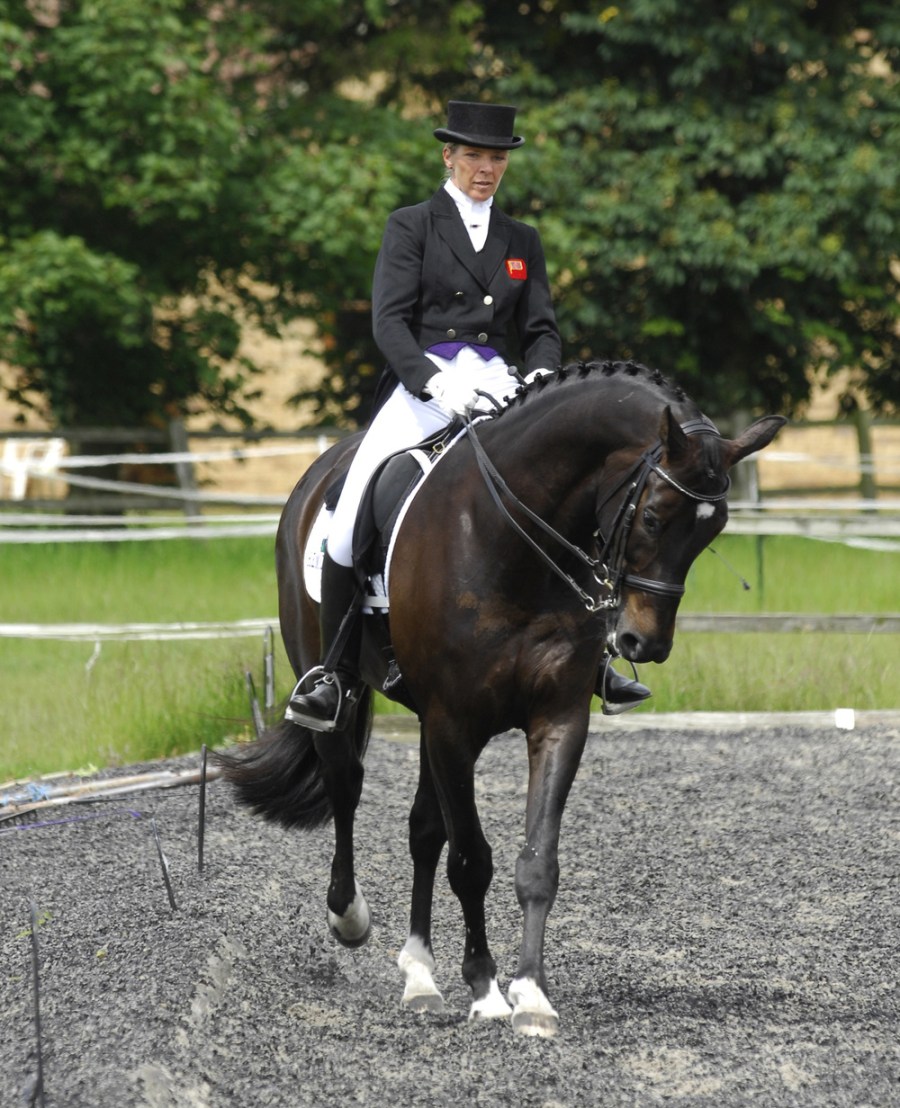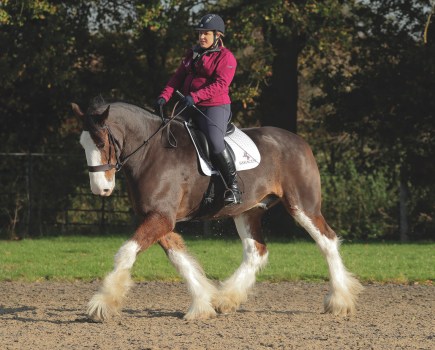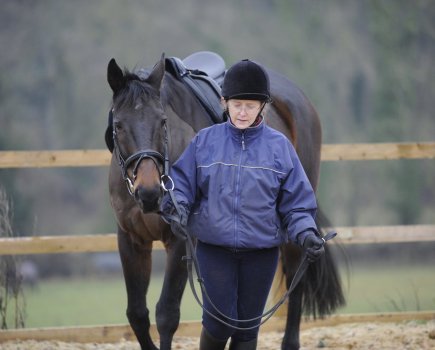Shoulder-in is a valuable tool for suppling your horse and keeping him fit for his job, but it’s easy to forget how to do it. That’s why we’ve created this simple guide to give you a quick re-cap.
Shoulder-in is a useful lateral exercise that’s ridden on three tracks – this means that his inside hind will be in line with his outside fore (a diagonal pair). His outside hind and inside foreleg (another diagonal pair) move in their own line.
As your horse moves forwards, he bends slightly around your inside leg to bring his near fore onto the inner track.
The horse’s inside foreleg passes in front of the outside fore, while the inside hind steps underneath the horse’s body, in front of the outside hind. His inside hip should lower as he brings his leg underneath.
Shoulder-in helps supple the horse and enables the rider to take control of the forehand. It requires a degree of collection so you and your horse need to be able to understand the aids for half-halt.
A lesser angle of shoulder-in is known as ‘shoulder-fore’. Shoulder-fore can be used in counter-canter, by bringing the horse onto an inside track and asking for slight flexion over the leading outside canter leg and shoulder, so the horse remains balanced.
It helps the rider control the forehand and is used to help straightness in the horse.
How to ride shoulder-in
In walk first, turn to ride a 10-metre circle at the start of the long side of the school.
As you turn onto the start of the circle, maintain your slight bend and flexion to the inside but move your horse sideways with your inside leg. Keep your upper body turned to the inside of the school and drop your weight down through your hip and into your inside leg and foot. Your horse should now be on three tracks.
Maintaining the impulsion, ride forwards. Keep your inside leg on the girth to create the inside bend and impulsion. Position your outside leg slightly behind the girth and let your outside rein control the angle.
To start with, ride only a few steps of shoulder-in, then ride straight. Don’t let your horse’s position drift or wobble back into a straight line. You may need to ride some half-halts before asking for shoulder-in, to balance and prepare your horse.
Common faults of shoulder-in are the horse over-bending around the inside leg, only bending in the neck, pushing the hindquarters out and resisting. In a good shoulder-in you should feel your horse’s hindquarters and back swinging and inside hip drop as he brings his inside leg underneath his body.










